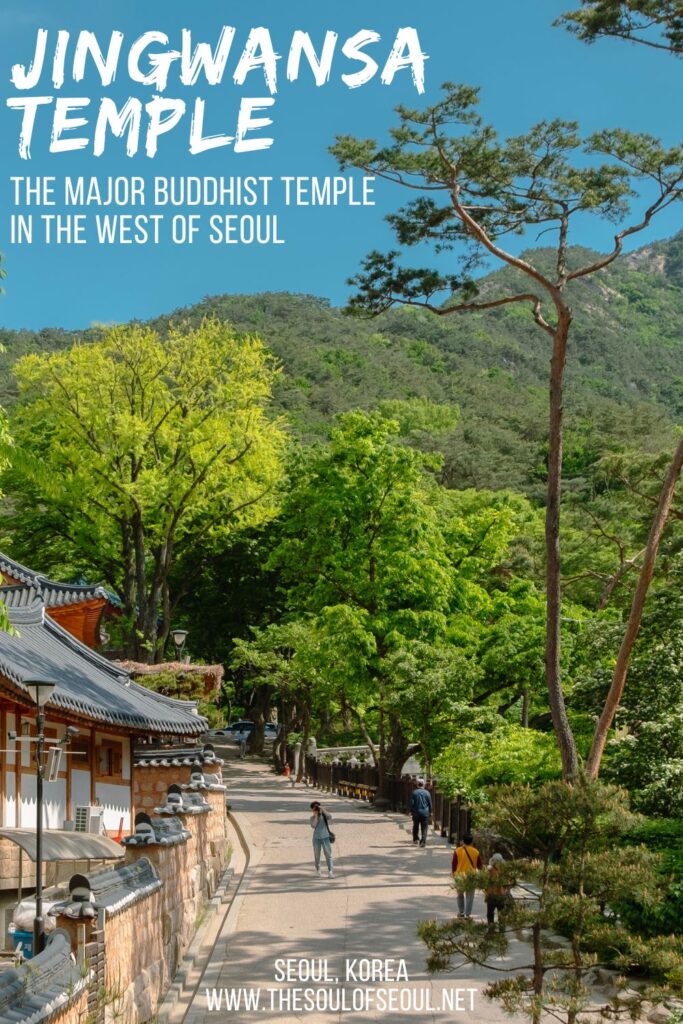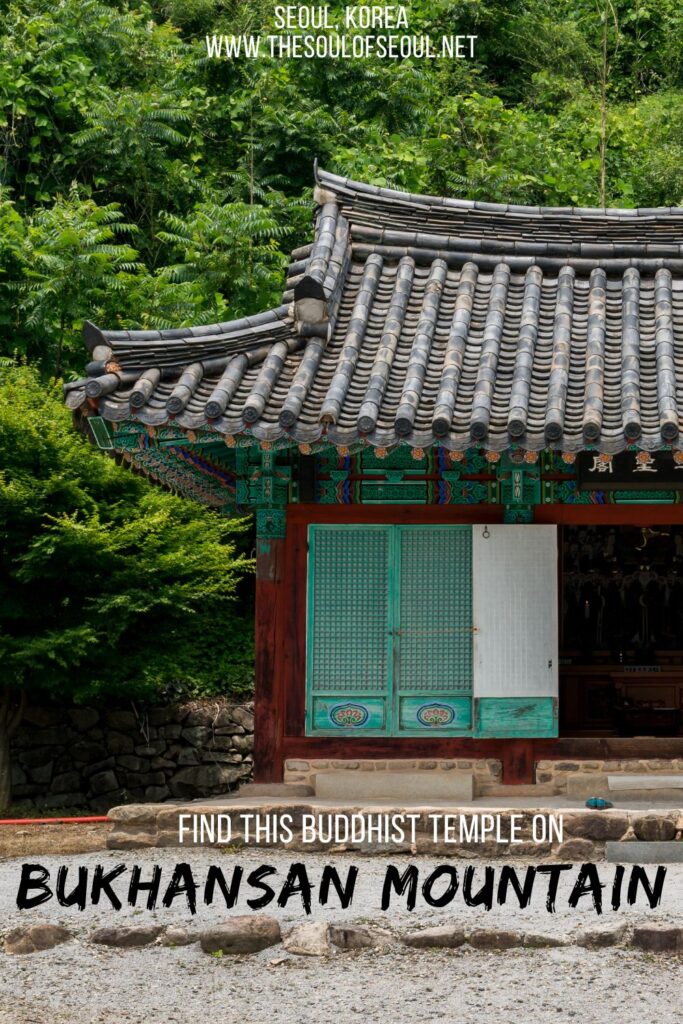Jingwansa Temple: A Beautiful Temple In Seoul
Last Updated on April 4, 2024
When it comes to visiting a Buddhist temple in Seoul, Korea, there are plenty to choose from. Jingwansa Temple (진관사) in Bukhansan National Park is a gorgeous temple complex that is just beyond the Eunpyeong Hanok Village.
It is the western most of the four major temples in the suburbs of Seoul, along with Bulamsa to the east, Sammaksa to the south and Seunggasa to the north. You could easily visit Jogyesa Temple or Bongeunsa Temple in downtown Seoul, but if you want a more serene experience, find Jingwansa Buddhist Temple.

Plan your trip to Jingwansa Temple in Seoul, Korea:
(This post contains affiliate links, which means I receive a certain percentage of a sale if you purchase after clicking at no cost to you. Thank you for your support.)
How To Get There
Jingwansa Temple sits just four kilometers from Yeonsinnae Station and with shuttle buses provided it is easily accessible. If you want to hike up into Bukhansan National Park, this is a great place to start. If you follow the trail from the Eunpyeong Hanok Village up to the temple, then you can continue on up into the mountain.
Address: 354 Jingwan-dong Eunpyeong-gu Seoul (서울특별시 은평구 진관동 354)
By Bus: Take bus # 7724 (green bus) from exit #3 of Gupabal Station, line 3 to Jingwansa Temple (final stop)
By Subway: Yeonsinnae Station, Exit 3. Make a u-turn from the exit and turn right at the corner. A block down is the stop for the shuttle bus.

The History
Jingwansa was established in 1011 to repay the Buddhist priest Jingwan for saving the life of King Hyeon-jong, the 8th king of the Goryeo Dynasty, when he was young. When Hyeon-jong was twelve, he was kicked out of the palace during a power struggle and monk Jingwan took him in, thereby saving his life. After Hyeon-jong once again took his place in the palace and became king he had this temple built for Jingwan and put it under the special protection of the Goryeo royal family.

During the Joseon Dynasty a library was added to the complex by King Sejong for Confucian scholars and the education hasn’t stopped there. This is the only temple in Seoul which serves Suryukje, a Buddhist ceremony to provide food and the Buddhist teachings to spirits and starved demons who wander the land and sea. The ceremony is performed every leap year for 49 days. The temple also has training facilities for biguni, or female monks, and offers a temple stay program to visitors.

Of course, the temple was burnt to ashes during the Korean War so what is there now is not the original framework, save three buildings, but since 1963 the temple complex has been lovingly restored and renewed. The temple now consists of Daeungjeon, The Hall of Sakyamuni, which is the main hall of the complex and holds the god Sakyamuni, the main statue of Buddha, along with Mireukbosa and Jehwagalhwabosal on each side.



When I visited it was spring cleaning time as well, so some of the local women were sitting just under the statues polishing all of the candle sticks and other fine pieces. The monks’ living quarters are to the left of the main hall and Myeongbujeon, The Hall of Judgment, a place to pray for the dead spirits to easily pass into eternity sits on the right.
Wonder what all of the colors on a Korean Buddhist temple are for? Wonder what they symbolize? Learn more about dancheong before you go so you can really appreciate everything that you’re seeing at Jingwansa Temple.

On the right side of the complex also of importance, are three small buildings that did not perish during the Korean War. They contain artifacts from the late 16th to the early 20th century and are cultural assets of Seoul. In 2009, during restoration to the buildings, a Korean flag and other materials from the Korean Independence Movement were found here and are considered to be historical records representing the movement against Japan by anti-Japanese monk Chowol Baek.
If you’re interested in Korean temples, nearby is another very interesting temple that is the only golden temple in Seoul. If you have the time, head up the street to find the Suguksa Temple.








Did you like this post? Pin It!



